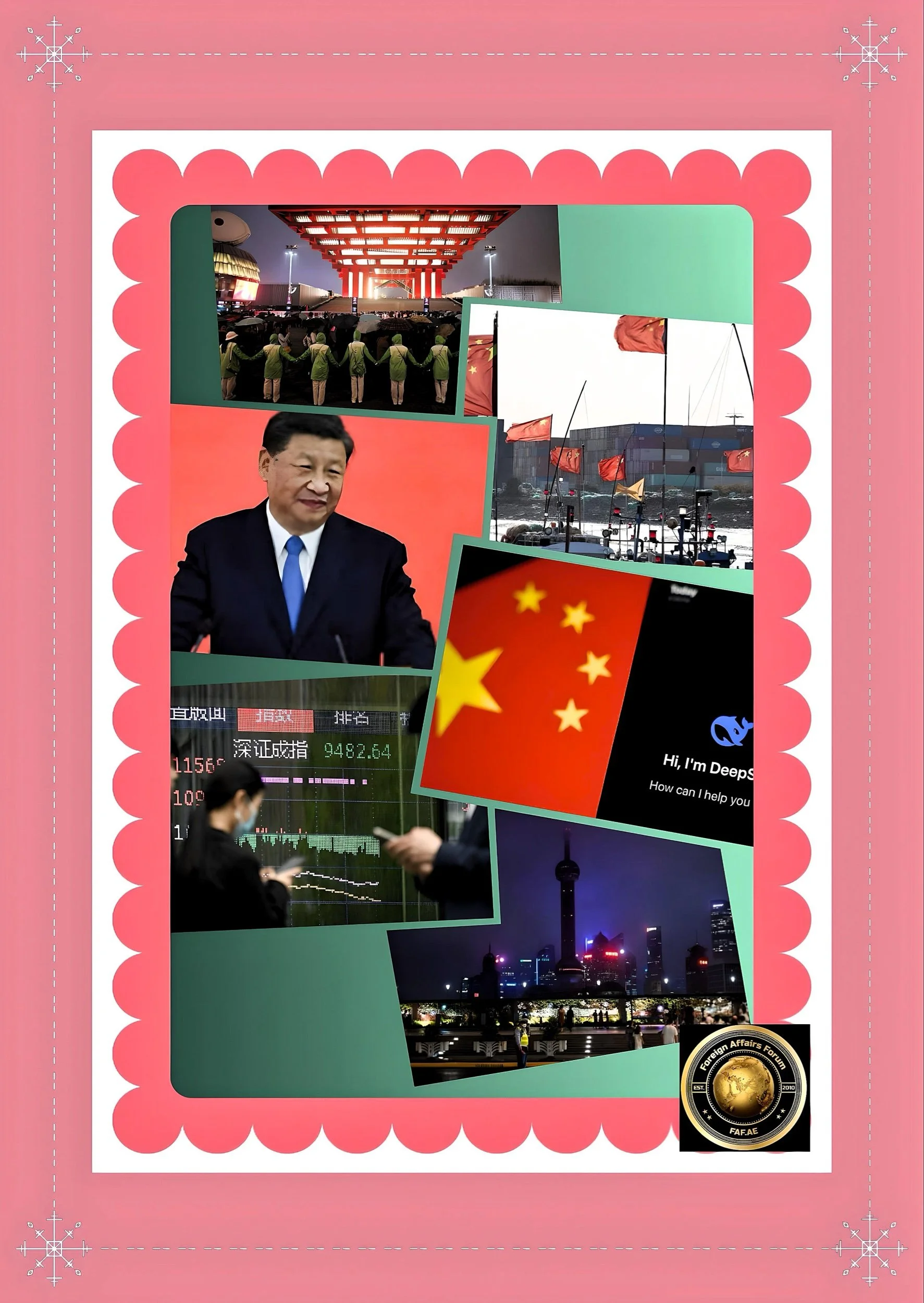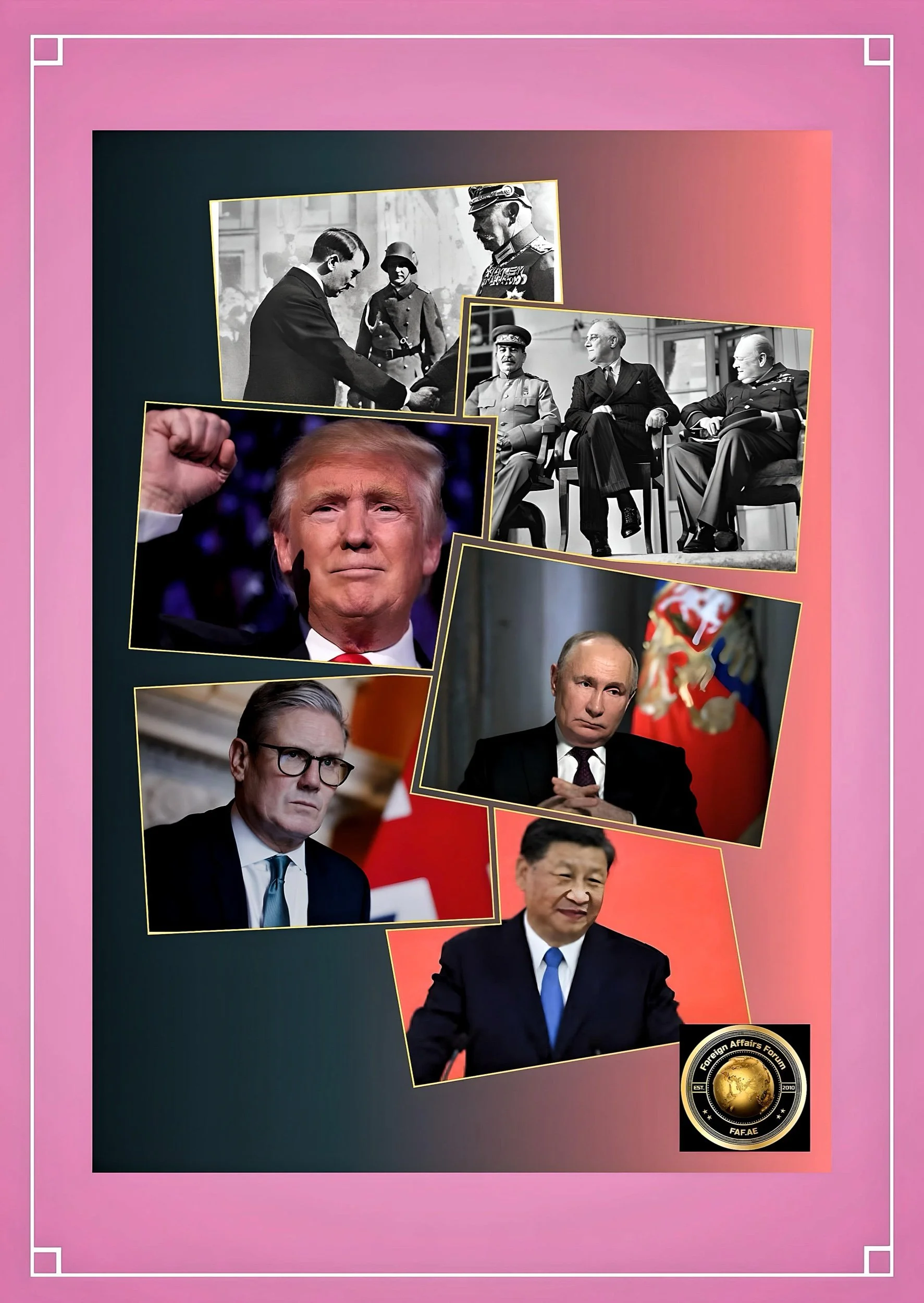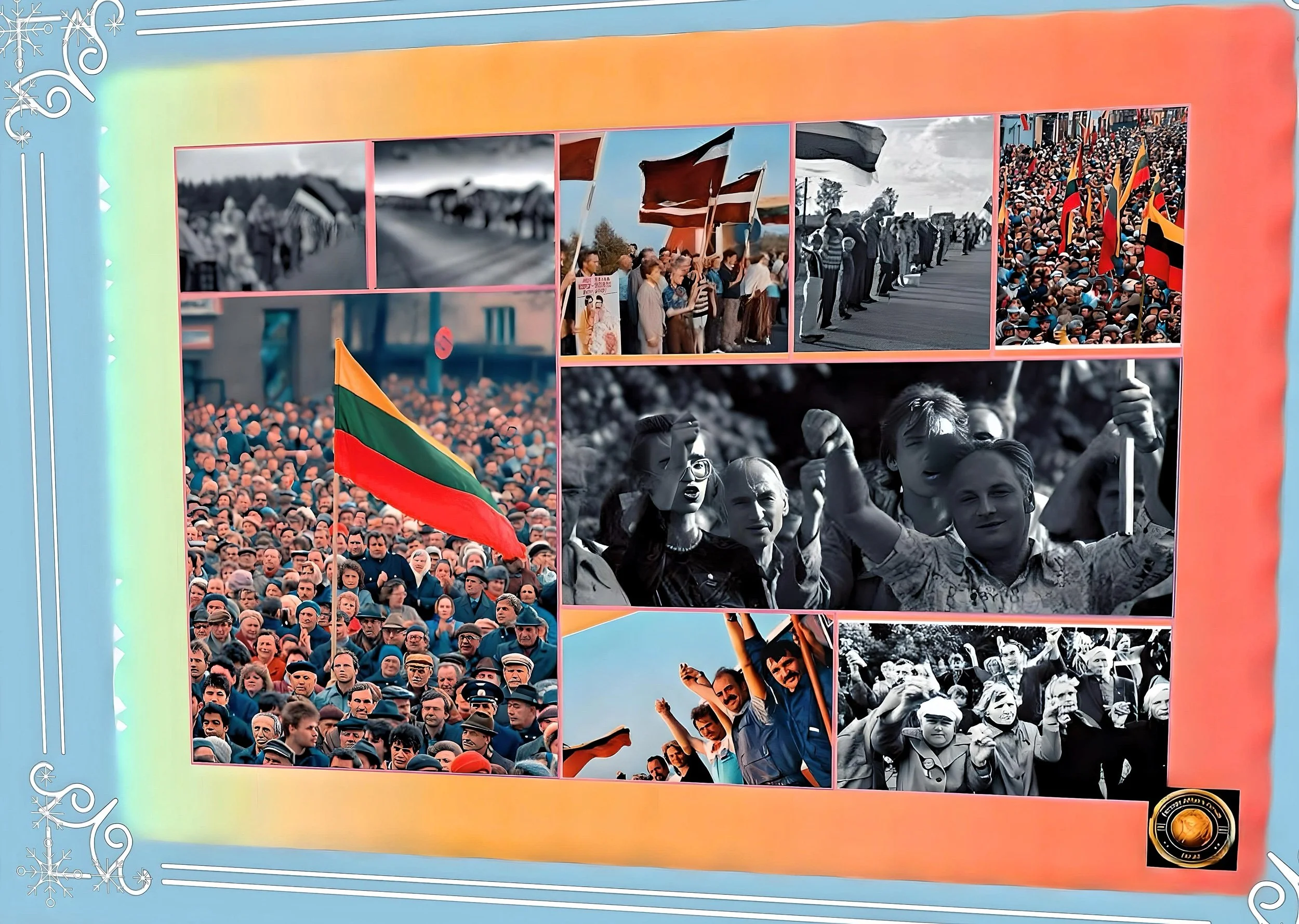The Russia That Putin Shaped: A Comprehensive Analysis of Power, Repression, and Global Dynamics
Introduction
Putin’s Russia has undergone a profound transformation since his ascension to power, evolving from a chaotic post-Soviet state into an increasingly authoritarian regime characterized by centralized control, anti-Western sentiment, and strategic realignment toward China.
The 2022 invasion of Ukraine has accelerated these trends, deepening domestic repression and further isolating Russia from Western institutions.
FAF analysis examines Putin’s Russia's historical development, the systemic changes following the Ukraine invasion, and their implications for global geopolitics and Russia’s future trajectory.
The Consolidation of Putin’s Authority
Vladimir Putin inherited an economically fragmented and politically unstable Russia.
When Putin came to office, the Russian state had lost central authority, while oligarchs wielded tremendous influence over the country’s resources and institutions.
His initial appeal stemmed from his promise to restore order after the chaotic 1990s.
The Creation of the Vertical of Power
In his first years in power, Putin systematically restored the hierarchy of governmental authority, limiting the influence of regional elites and challenging oligarchs who had amassed wealth and political power under Yeltsin.
Russian political scientist Andranik Migranyan said that Putin destroyed the political influence of influential figures like Boris Berezovsky and Vladimir Gusinsky, who had effectively “privatized the Russian state with all its resources and institutions.”
This consolidation laid the groundwork for what would become an increasingly centralized system.
The Kremlin established a foundation for long-term control through a document known as “Revision Number Six,” which outlined comprehensive strategies for maintaining power.
These strategies included collecting compromising information about individuals and organizations of interest, establishing conditions under which independent media could not operate, controlling elections to ensure victories of pro-Kremlin candidates, and creating ostensibly independent civil society organizations under Kremlin control.
This approach has been characterized as a “counterintelligence state,” representing a form of guided democracy where democratic institutions exist nominally but are controlled by the Presidential Administration and security services.
Evolution into Authoritarian Rule
What began as a restoration of government functionality has evolved into what observers characterize as “an authoritarian dictatorship with a personality cult.”
Putin has implemented constitutional amendments, which could allow him to remain in power until 2036.
His most recent reelection in March 2024 extended his already lengthy tenure, cementing his status as Russia’s predominant political figure of the 21st century.
The economic component of Putin’s consolidation involved creating what has been called a “corporatist system " and establishing close ties with business organizations and trade unions.
More critically, Putin moved to develop “national champions” - large state-owned enterprises in strategic sectors, particularly energy.
Critics have described this as creating a new class of oligarchs, sometimes called “oligarchs,” who owe their position and loyalty to Putin himself.
Anti-Western Sentiment
From Soviet Roots to Modern Expression
Anti-Western propaganda in Russia has deep historical roots that provide context for understanding Putin’s contemporary approach to relations with the West.
The current Kremlin’s anti-Western messaging draws heavily from Soviet-era propaganda techniques while adapting them to modern media environments.
Historical Foundations of Anti-Western Messaging
Soviet propaganda consistently portrayed the West as decadent, dangerous, and inherently antagonistic to Soviet interests.
Analysis of the Soviet newspaper “Communist” from the 1970s reveals consistent narrative patterns: the presentation of Western countries as spaces lacking security and prosperity, claims that the West seeks destabilization and intervenes in the domestic affairs of other countries, and portrayal of Western nations as divided and fragmented.
These narratives have been revived and adapted in contemporary Russian propaganda.
The methods employed during the Soviet period involved exaggeration, selective reporting, and demonization.
As Czechoslovak intelligence agent Ladislav Bittman noted, “The most successful operation of this kind, active measures must contain an element of truth so that the disinformation as a whole can be widely acceptable.”
This principle continues to guide Russian disinformation efforts today.
Modern Russian Propaganda and Anti-Western Rhetoric
In 2022, following the invasion of Ukraine, Russian Foreign Minister Sergei Lavrov explicitly stated that “Russia has lost all illusions about relying on the West, and Moscow will never accept a view of the world dominated by a United States that wants to act like a global sheriff.”
This statement reflects the official Kremlin position amplified through state-controlled media.
The modern Kremlin has reinforced Soviet-era messaging while adapting it to contemporary concerns.
Russian disinformation continues to claim that citizens in Western countries live in poverty and must choose between food and heating in winter, a narrative that was intensified following Western sanctions after Russia invaded Ukraine.
Similarly, Russian propaganda frequently claims that countries like Georgia and Ukraine are not truly sovereign but are governed by the United States.
While Soviet propaganda relied primarily on print media and radio, modern Russian disinformation operations employ sophisticated digital techniques, including social media manipulation, fake accounts, inauthentic networks, and botnets.
These technological adaptations have made Russian disinformation more pervasive and more complex to counter.
The Ukraine Invasion
Intensification of Domestic Control
The February 2022 invasion of Ukraine marked a decisive turning point in Putin’s Russia, triggering unprecedented levels of internal repression and accelerating the country’s isolation from Western institutions.
Prelude to Invasion and Military Challenges
In late 2021, Russia massed troops near Ukraine’s borders while issuing demands to the West, including a ban on Ukraine ever joining NATO.
Despite diplomatic efforts by Western leaders, such as French President Emmanuel Macron and German Chancellor Olaf Scholz, Putin proceeded with the invasion.
According to Scholz, Putin had told him that “Ukraine should not be an independent state,” revealing his fundamental rejection of Ukrainian sovereignty.
The invasion was preceded by an escalation of attacks by Russian proxy forces in the Donbas region and false flag operations designed to create a pretext for military action.
On February 17, 2022, Russian proxy forces shelled a kindergarten in Ukrainian-held territory and blamed the strike on Ukraine, part of a pattern of provocations designed to justify the coming invasion.
Russia’s military campaign encountered significant difficulties almost immediately.
By late 2023, the war had cost Moscow an estimated 315,000 dead and injured, according to U.S. analysts, depleted Putin’s coffers by $211 billion, and resulted in the loss of more tanks than Russia had available when the war began.
These setbacks culminated in an internal crisis in June 2023 when Yevgeniy Prigozhin, leader of the Wagner Group mercenaries, led a short-lived mutiny against the Russian Ministry of Defense.
Intensification of Internal Repression
The invasion triggered unprecedented levels of internal repression within Russia. On March 4, 2022, Putin signed into law a bill introducing prison sentences of up to 15 years for publishing “knowingly false information” about the Russian military and its operations.
This legislation effectively criminalized independent reporting on the war, with the Russian government determining what constituted “truth.”
Russian censorship agency Roskomnadzor ordered the country’s media to use only information from Russian state sources or face fines and blockages.
Independent media outlets, including TV Rain, Echo of Moscow, and Novaya Gazeta, were forced to cease operations or relocate outside Russia.
The websites of international news organizations like BBC News Russian and Radio Free Europe/Radio Liberty were blocked, further limiting Russians’ access to non-state information sources.
By December 2022, more than 4,000 people had been prosecuted under these “fake news” laws.
Russian authorities also blocked major social media platforms like Facebook and Twitter. At the same time, TikTok in Russia banned new uploads but continued to host old videos from Russia-based accounts and permitted Russian state media to continue posting.
This selective censorship created what researchers called a “splinternet” that permitted pro-Kremlin news while blocking foreign accounts and critics of the war.
Russia’s Strategic Pivot to China
As relations with the West deteriorated, Russia has increasingly strengthened its ties with China, though the relationship may be more complex than public pronouncements suggest.
The Public Face of the Partnership
In April 2025, Russian President Vladimir Putin met with Chinese Foreign Minister Wang Yi in Moscow, expressing that he was “looking forward” to welcoming Chinese President Xi Jinping for a visit in May.
Putin emphasized that Russia and China should continue to send “strong signals to the world about strengthening strategic cooperation” amid the volatile international situation.
The Chinese readout of communications between Xi and Putin described their relationship as having a “strong internal driving force and unique strategic value,” with Xi calling Russia a “true friend” and a “good neighbor.”
This partnership has been publicly framed as a cornerstone of both nations’ foreign policies, with Putin telling Wang that strategic coordination and political trust had deepened between the neighboring countries.
Both sides have characterized the relationship as a “no-limits” partnership, suggesting an alliance without boundaries or restrictions.
Underlying Tensions and Limitations
Despite these public declarations, analysis suggests the Russia-China relationship may be weaker than the two nations want the world to believe.
According to research from Filter Labs, a U.S.-based political research and analysis company, the partnership is “vulnerable” and “infused with doubt, ripe for disruption.”
While governments and state-run media project an image of a strong partnership, their relationship may be underpinned by tension, mistrust, and competing interests.
The strategic motivations driving this partnership are complex. For Russia, facing isolation from Western financial systems and markets following the Ukraine invasion, China represents an essential economic lifeline.
For China, Russia offers energy resources, military technology, and a partner in challenging U.S. global dominance. However, these pragmatic considerations may not translate into deep mutual trust or aligned long-term objectives.
The Future of Russia-West Relations
The profound changes in Russia under Putin, particularly following the Ukraine invasion, have significant implications for the future of Russia’s relationship with Western nations and the broader international order.
Prospects for Reconciliation
The search results present a pessimistic view of the potential for genuine reconciliation between Russia and the West.
According to the analysis of Russia’s trajectory, “A Russia under the control of Putin or someone like him will emerge from this war bitter and vengeful, determined to settle accounts with a ‘collective West’ that vexed and wounded it in Ukraine.”
Russia will retain its nuclear arsenal and significant asymmetric capabilities, including cyberattacks and connections to criminal networks, that can be deployed against perceived adversaries.
Even attempts at diplomatic rapprochement may face significant obstacles. As the query notes, “Putin’s fundamental mistrust of the West will make a genuine reconciliation impossible,” even if specific leaders like Donald Trump pursue a superficial thaw in relations.
Putin understands that any policy shifts under one administration could be reversed by subsequent leaders, making long-term strategic planning based on Western goodwill highly risky from his perspective.
Systemic Challenges to Western-Russian Relations
The systemic challenges to improved Western-Russian relations extend beyond immediate policy disagreements.
The transformation of Russia’s domestic system under Putin, with increased repression and state control of media, creates structural barriers to meaningful dialogue.
The narrative that the West is fundamentally hostile to Russia has become deeply embedded in Russian official discourse and state media, making it challenging to shift public perception even if elite attitudes were to change.
Russian elites have developed economic and political incentives tied to the current anti-Western orientation.
As the query notes, “tens of millions of Russians, including senior officials and many of the country’s wealthiest people, now view the West as a mortal enemy.”
This constituency has material interests aligned with maintaining tension with Western nations and would likely resist significant policy changes.
Conclusion
The Russia that Putin created over two decades fundamentally differs from the chaotic post-Soviet state he inherited.
Through systematic consolidation of power, elimination of independent media, control of strategic economic assets, and cultivation of anti-Western sentiment, Putin has transformed Russia into an authoritarian state oriented around his leadership and in opposition to Western liberal democracy.
The 2022 invasion of Ukraine served as a catalyst, accelerating existing trends toward greater repression internally and isolation from Western institutions externally.
The war has come at an enormous human and economic cost to Russia. Yet, Putin has used it to consolidate domestic control further and justify an even more restrictive political environment.
While Russia’s strategic relationship with China is subject to underlying tensions and limitations, it significantly reorientates Russia’s global positioning.
Even if specific policy adjustments lead to temporary improvements in Western-Russian relations, the structural changes within Russia and the deeply entrenched anti-Western narrative make genuine reconciliation unlikely in the foreseeable future.
The Russia that Putin has made will continue to view itself in opposition to Western interests and values, regardless of tactical diplomatic maneuvers by either side.






